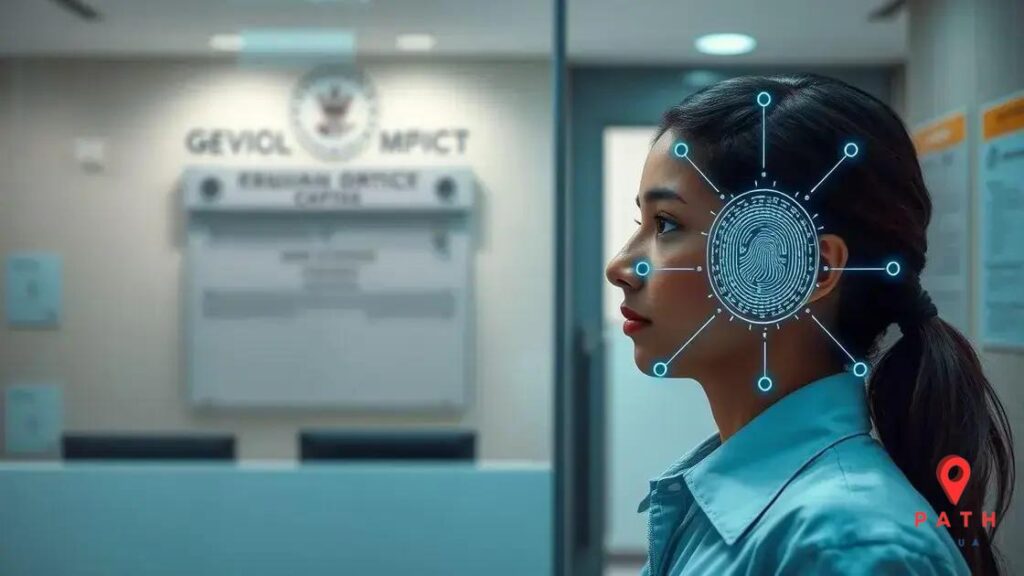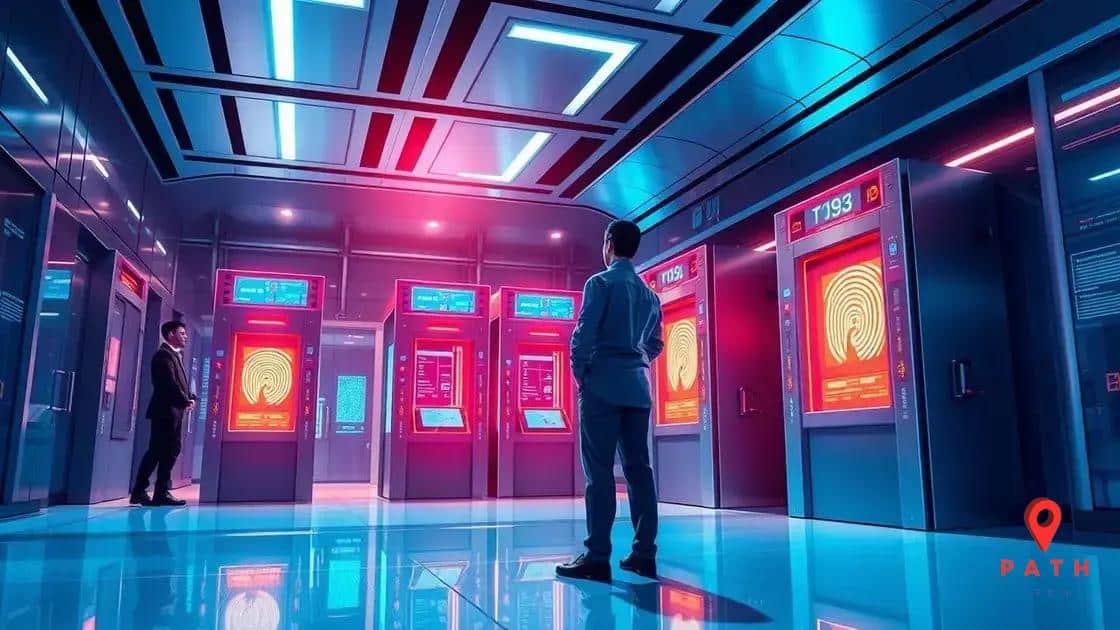Biometric verification for social security access: what you need to know

Anúncios
Biometric verification for social security access enhances security by using unique physical traits, such as fingerprints and facial recognition, to accurately confirm identities and reduce the risk of fraud.
Biometric verification for social security access is becoming increasingly vital as we navigate a digital world. Have you ever wondered how this technology impacts your daily security?
| Topic | Key Insight | Impact |
|---|---|---|
| What It Is | Uses physical traits to ID | Confirms identity fast |
| How It Works | Matches data in real time | Speeds up access |
| Security Benefits | Stops identity fraud | Boosts system trust |
| Challenges | Privacy and tech costs | Slows adoption |
| Future Trends | AI and multi-modal scans | More secure systems |
Anúncios
Understanding biometric verification
Biometric verification is a technology that uses unique physical characteristics to identify individuals. This method includes features like fingerprints, facial recognition, and iris scans. It’s becoming crucial in areas like social security to enhance security and streamline the verification process.
The process works by capturing a person’s biometric data and comparing it to the stored data in a database. This verification happens in real-time, ensuring swift access to services.
Anúncios
Types of Biometric Verification
- Fingerprint recognition: This is one of the most common methods, using unique patterns on a person’s fingertips.
- Facial recognition: It analyzes facial features and matches them with enrolled profiles.
- Iris recognition: This technology scans the unique patterns in a person’s iris for accurate identification.
To learn more about biometric technology and its applications, you can read more on the NIST (National Institute of Standards and Technology) website.
How biometric verification works
Biometric verification works by using unique biological traits to identify individuals based on their physical characteristics. These traits are collected and matched against stored data, offering a secure way to confirm identities.
The process typically begins with capturing a user’s biometric data using specialized devices. For instance, a fingerprint scanner captures the pattern of a person’s fingerprint, while a facial recognition camera assesses facial features.
Steps in Biometric Verification
- Data capture: Biometric data such as fingerprints or facial images are collected from the user.
- Feature extraction: The system analyzes and extracts distinctive features from the captured data.
- Matching: The extracted features are compared to existing data in a database to verify identity.
This method not only enhances security but also speeds up the verification process. For a deeper dive into how biometric systems operate, visit the National Institutes of Health website.
Advantages of biometric verification for security

Biometric verification offers numerous advantages that enhance security for various applications, including social security systems. It significantly improves identity verification processes by relying on unique physical traits.
One of the main benefits of biometric verification is its ability to reduce fraud. Since biometric identifiers such as fingerprints and facial features are unique to each individual, it is nearly impossible for someone to fake them.
Key Advantages of Biometric Verification
- Enhanced security: Biometric systems provide a high level of protection against unauthorized access.
- Improved user experience: These systems streamline the verification process, allowing for quicker access compared to traditional methods.
- Cost efficiency: Although initial setup costs can be high, biometric systems can reduce long-term operational costs by minimizing fraud.
For a deeper understanding of biometric technology’s benefits, you can visit the National Institute of Standards and Technology’s Biometrics website.
Challenges in implementing biometric systems
Implementing biometric systems presents various challenges that organizations must address to ensure success. While these systems offer increased security, their adoption is not without obstacles.
One major challenge is the need for technology infrastructure. Organizations must invest in the proper hardware and software to support biometric verification, which can be costly.
Common Challenges in Implementation
- Data privacy concerns: Handling sensitive biometric data requires adherence to strict regulations to protect users’ privacy.
- Integration issues: Biometric systems must seamlessly integrate with existing security systems and databases for optimum performance.
- User acceptance: Getting users to trust and adopt biometric systems can be difficult, especially if they are unfamiliar with the technology.
To gain more insights into the complexities associated with biometric system implementation, check out the FBI’s Biometric Technology Oversight Group.
Future trends in biometric technology
The future of biometric technology looks promising, with advancements aimed at enhancing security and improving user experience. As technology evolves, we can expect several innovative trends to emerge in this field.
One major trend is the rise of multi-modal biometrics, which combines different biometric traits for more accurate identification. This reduces the chances of false negatives and enhances overall security.
Emerging Trends in Biometric Technology
- Increased use of AI and machine learning: These technologies will improve biometric recognition systems by enabling them to learn and adapt to new data patterns.
- Integration with mobile devices: We will see more biometric features embedded in smartphones and wearables, making it easier for users to access services securely.
- Enhanced privacy measures: As data privacy concerns grow, biometric systems will need to implement advanced security protocols to protect user data.
For more insights into future trends in biometric technology, you can visit the Biometric Update website.
In summary, the future of biometric verification is bright
With advancements in technology, biometric verification for social security access and other applications will become even more secure and user-friendly.
As we explore emerging trends, such as multi-modal biometrics and AI integration, it’s clear that these technologies will play a crucial role in our daily lives.
While challenges remain, the benefits of biometric systems, like enhanced security and reduced fraud, make them an essential part of our future.
Embracing these innovations will help us create safer and more efficient access to essential services.
FAQ – Frequently Asked Questions about Biometric Verification for Social Security Access
What is biometric verification?
Biometric verification is a security process that uses unique physical traits, like fingerprints or facial recognition, to confirm an individual’s identity.
How does biometric verification enhance security?
It reduces the chances of identity fraud since biometric traits are unique to each person, making it nearly impossible to fake them.
What are the common challenges of implementing biometric systems?
Challenges include ensuring data privacy, the need for technology infrastructure, and achieving user acceptance.
What are some future trends in biometric technology?
Future trends include increased use of AI, multi-modal biometrics, and enhanced privacy measures to protect user data.